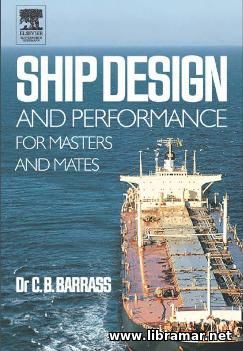Introduction to Containers
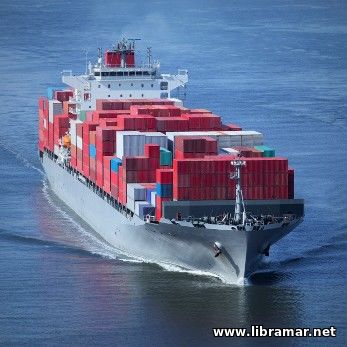
The containership carries the improvement of the general cargo ship one step further by unitizing all of its cargo within containers. The containership system is most suited for finished goods shipment as:
• the individual containers are suited in size to relatively small shipments which are to be expected in the finished goods trade;
• door to door, i.e. shipper to consigner, shipping is possible without the integrity of the container being broached. This protects valuable finished goods from the elements, handling damage, and pilferage without expensive crating;
• the time and cost of shipment door to door is reduced which is a requirement of some finished, for example perishable, goods.
The containership represents one of the types of ships in which the total shipping system must be carefully engineered before operations can start. Thus, this section will attempt to explain the total operation as it applies to the cargo itself.
The dimensions of the standard ISO (International Organization for Standardization) 10, 20, 30 and 40-ft containers are shown on the picture.
Note the rather precise tolerances to which each is built. Unlike the breakbulk carrier, the containership is fitted with cell guides and fittings with similar tolerances in order to ensure that any standard container will fit these stowage fittings. Some of the various types of containers used are described briefly as follows: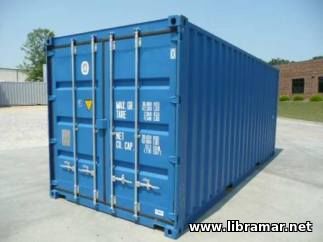
• Standard dry container — comprises the majority of today's containers and simply provides a container with a solid, watertight roof and sides. It is suitable for the carriage of any cargo not requiring temperature control. Like the general cargo ship hold, the dry container is not immune to sweating or cargo generated heat buildup.
• Ventilated dry container — dry, insulated container has a small heating and 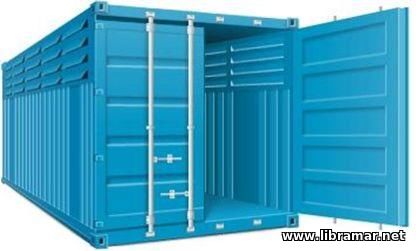 air conditioning unit built in which can maintain a desired temperature (above freezing) and in some cases a desired humidity.
air conditioning unit built in which can maintain a desired temperature (above freezing) and in some cases a desired humidity.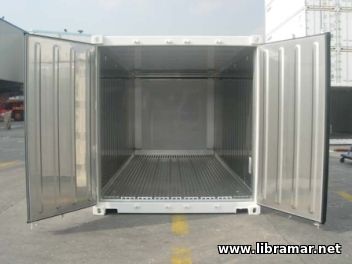
• Refrigerated container — dry, insulated container contains a refrigeration unit capable of taking the interior stowed cargo below freezing and holding it there at a desired temperature.
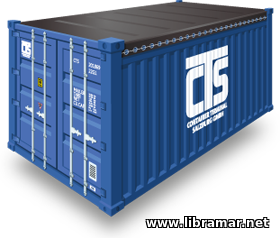 • Open top — a dry container with a tarpaulin type roof. Large bulky goods can be loaded through the top by a crane and then the item, even if it extends beyond the top of the container, can be covered by the tarpaulin.
• Open top — a dry container with a tarpaulin type roof. Large bulky goods can be loaded through the top by a crane and then the item, even if it extends beyond the top of the container, can be covered by the tarpaulin.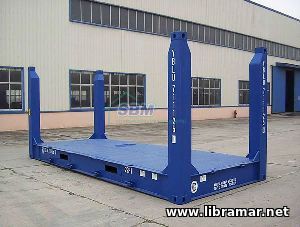
• Open flat — structure is more closely related to a large pallet with corner posts so that it can be picked up with container handling gear and so that it can be stacked with other containers. The open flat usually has a much more substantial base than a dry container which is capable of supporting heavy machine goods not requiring the protection of a closed container. It should be noted that any container stowed below deck is protected from the elements during ship transit.
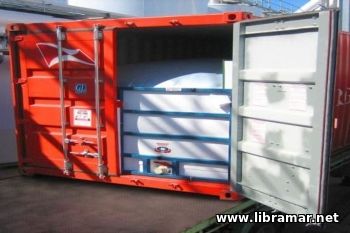 • Bulk liquid — containers can be full height with cylindrical tanks or half height with elliptical tanks. In either case, the cargo comprises less than the full rectangular volume. The density of liquid cargoes is such that this reduced capacity is compatible with chassis, crane, and other load bearing fittings which are designed on the basis of a dry container filled with lighter density dry cargo.
• Bulk liquid — containers can be full height with cylindrical tanks or half height with elliptical tanks. In either case, the cargo comprises less than the full rectangular volume. The density of liquid cargoes is such that this reduced capacity is compatible with chassis, crane, and other load bearing fittings which are designed on the basis of a dry container filled with lighter density dry cargo.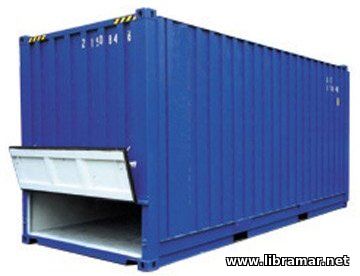
• Bulk container — basically a dry container fitted with an internal plastic bag type liner into which pelletized or other free flowing bulk commodities may be loaded. Once the rear doors are open, discharge can be facilitated by tipping the container, dump truck style, up at one end. The liner minimizes costly cleanup and possible environmental problems.
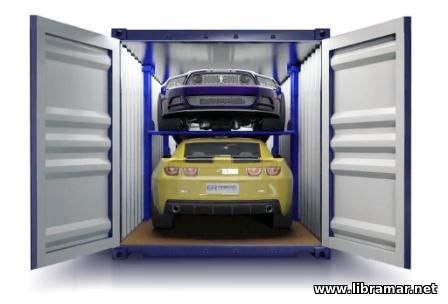 • Car carrier — an open framework container designed to accept four or more standard size automobiles. Often these containers are so oversized and light framed that unlike other containers they are not designed to go over the road or to be stowed other than at the top of a stack.
• Car carrier — an open framework container designed to accept four or more standard size automobiles. Often these containers are so oversized and light framed that unlike other containers they are not designed to go over the road or to be stowed other than at the top of a stack.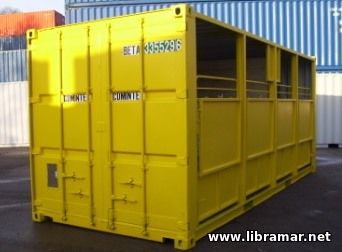
• Cattletainer — as the name implies, this unit hauls beef on the hoof. Depending on the disposition and nature of the cargo, this is one type of container that can sustain considerable damage from the cargo regardless of the weather experienced by the ship.
A recent variation of the controlled temperature container is the Hypobaric or high humidity container. Hypobaric storage consists of placing a commodity in a flowing stream of air, substantially saturated with water, at a reduced pressure and controlled temperature. Under these conditions, the commodity, i.e. plant and animal products usually carried under conventional cold storage, is outgassed, so that only the vapors released into the storage area are flushed away; additionally, gasses which limit storage life and are normally retained within the commodity, regardless of the rate of air circulation or change, now are caused to escape. Maintenance of a very high humidity during hypobaric storage prevents shrinkage, weight loss and desiccation.
The Container Spreader
The container spreader is a structural frame containing four twist locks on its bottom corners which fit into the top container castings. These twist locks are rotated 90 deg by hydraulic/electrical or manually activated mechanisms and lock the spreader to the container.
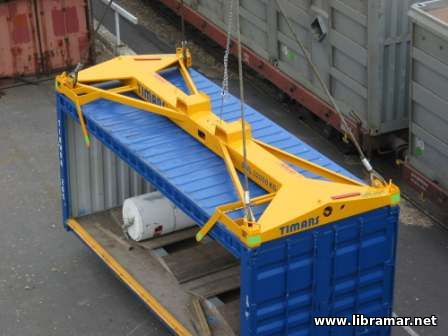 Container spreaders are best lifted directly by individual purchases at all four corners to prevent the container from tipping transversely or longitudinally. However, when the spreader must be suspended from a single point, as would be necessary with a Whirley crane, ships' conventional or heavy-lift cargo gear, a leveling mechanism must be placed between the spreader and the hook. Here you can see how a hydraulic or cable device would be rigged. It can be seen that for level hoisting it is necessary to have the container center of gravity directly below the hoist point in both planes. The container spreader shown on the picture is adjustable longitudinally (expandable) so that it may, in this case, accommodate 20 ft, 30 ft and 40-ft containers.
Container spreaders are best lifted directly by individual purchases at all four corners to prevent the container from tipping transversely or longitudinally. However, when the spreader must be suspended from a single point, as would be necessary with a Whirley crane, ships' conventional or heavy-lift cargo gear, a leveling mechanism must be placed between the spreader and the hook. Here you can see how a hydraulic or cable device would be rigged. It can be seen that for level hoisting it is necessary to have the container center of gravity directly below the hoist point in both planes. The container spreader shown on the picture is adjustable longitudinally (expandable) so that it may, in this case, accommodate 20 ft, 30 ft and 40-ft containers.
The Container Terminal
In a composite container terminal the containership is being loaded and discharged by one shore container crane with containers transported to the storage area by wheeled straddle carriers resembling lumber carriers. The straddle carriers move the containers into open aisles where rail mounted shore gantry cranes stack the containers for storage and/or reshipment. There are many other methods of loading/unloading, transporting and storing containers as follows.
а. Loading/Unloading Gear
• Shipboard gantry cranes
• shore gantry cranes
• shore or shipboard Whirley cranes
• conventional break-bulk ship cargo gear.
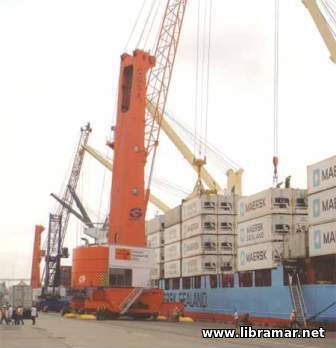 b. Storage Yard Transport
b. Storage Yard Transport
• Straddle carrier,
• over-the-road container chassis,
• forklift equipped with spreader
• wheeled dollies
• air casters.
c. Storage Yard Stacking and Sorting
• Gantry crane,
• straddle carrier — note in this case that an aisle would be required between each individual stack of containers requiring more stowage area per container 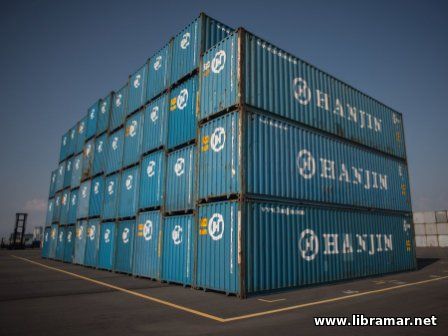 stack,
stack,
• forklift
• large parking garage type structures where containers are stacked and accessed through a system of elevators and trolley lifts in a totally mechanized operation.
The "Read Later" function allows you to add material to this block with just one click. Just click on the icon and read the articles that interest you at any convenient time.


